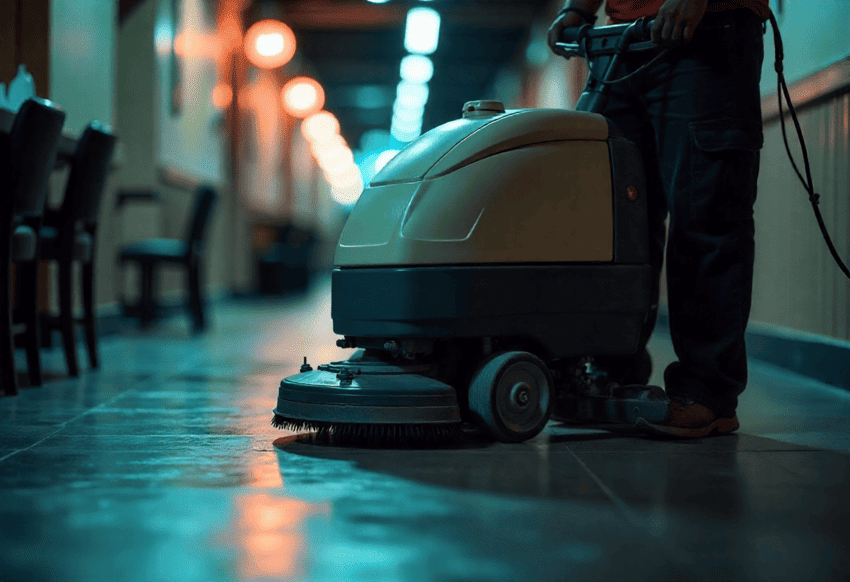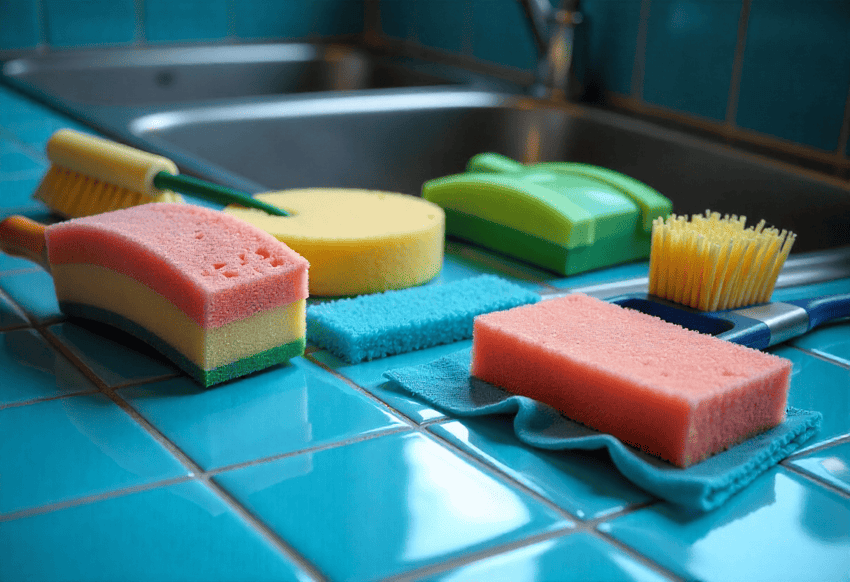Running a restaurant goes beyond serving good food. Clean space matters as much as food. It shapes what customers think and keeps the back safe. The right cleaning equipment for restaurants from Jacleen keeps standards up in the dining area, the kitchen, and even storage.
Tools need to do the tough jobs. Handle grease, keep floors dry, and cut slips. Jacleen gear helps staff work quicker and keeps inspectors happy. With the right setup, cleaning fits into the day instead of feeling like extra work.
1) Daily floor care: mops, buckets & squeegees
Hard floors are everywhere in hospitals, so start with the basics—the tools your team reaches for every hour. The goal is quick resets with minimal cross-contamination and less bending or hand contact.
- Flat mops/dust mops for dry pickup between rounds. They lift grit and hair before wet work, so the floor doesn’t turn muddy.
- Microfiber mop heads for fine particles and better absorbency. They don’t leave as many streaks, drop less lint, and can be color-coded.
- Buckets with a wringer keep hands out of dirty water and make changeovers faster. A sturdy handle and marked fill lines save time.
- Floor squeegees & deck brushes to push water toward drains and scrub textured tiles in corridors, pantries, and wet rooms.
You’ll usually group these under Floor Cleaning Tools and Mopping Buckets within the broader Cleaning Equipment & Tools category. Keep a small stock of spare mop frames and microfiber heads so a broken clip or a full laundry bin doesn’t stall a shift.
Quick practice tip: Use basic color coding for each zone—green for ward rooms, blue for public areas, and red for toilets. It’s easy to explain, simple to check, and helps prevent mix-ups without the need for complicated rules.
2) Janitorial carts that keep teams moving
Hospitals are big places to cover. A strong cleaning cart helps save steps and keeps gear in one spot. It should have covered waste, mop holders, and shelves. Go for quiet wheels that don’t mark floors, side guards so bottles don’t fall, and a lockable spot for chemicals when moving through patient areas. Add labelled spray bottles and color-coded cloth trays so anyone can restock in seconds. For linen movement, pair with X-frame trolleys (washable bags, foot pedals); for routine rounds, three-tier plastic service trolleys are sturdy, light, and easy to wipe down between shifts.

3) Machines for bigger areas
For long corridors, lobbies, and multi-story blocks, manual tools alone won’t cut it. The spaces are too big, and the foot traffic is too heavy. That’s why hospitals and similar facilities usually rely on a mix of machines:
- Vacuum cleaners for dust control on dry floors and to keep air clearer in high-traffic areas.
- Carpet cleaners are useful in clinics, offices, and admin areas where carpet sections hold dirt easily.
- Polishers, scrubbers, and sweepers help with quicker cleaning, safer floors, and a steady shine that keeps public spaces looking maintained.
Quick tip: Choose pads and brushes to suit the floor. Use soft pads on sealed vinyl or stone and stiff brushes on rough or textured floors where dirt holds on. It’s a good habit to keep a small “test kit” of pads on hand so supervisors can quickly trial the right match before a scheduled deep clean. That way, cleaning teams save time and avoid costly mistakes.
4) Touch-free hygiene: dispensers & dryers
Restrooms, treatment rooms, and pantries rely on more than just cleaning—they need hardware that can handle heavy use. Soap and sanitizer dispensers, tissue dispensers, and hand dryers need to be durable, dependable, and simple for staff to refill quickly. One simple but effective step is standardizing models across all blocks so maintenance only stocks a single type of cartridge or spec. This reduces storage needs, lowers the chance of ordering errors, and makes training staff much easier.
Match the hardware with the right paper products for each area. Clinics benefit from inter-fold towels that dispense cleanly and reduce waste, while public restrooms handle higher traffic better with jumbo rolls. Back-of-house areas often do best with industrial rolls that last longer and cut down on changeovers. Matching products this way keeps costs steady and prevents the classic “wrong refill” downtime that disrupts service.
5) Waste management that actually works
General, recyclable, and clinical waste are the main categories hospitals have to manage. Clinical bins are already in place, but the everyday work depends on the basics. Stainless-steel or plastic pedal bins fit well in wards and treatment rooms, since hands-free use lowers risk. Wheelie bins take care of bulk waste in corridors, kitchens, and loading bays. Liners should follow the haul-away schedule to stop spills or overflow. The right mix keeps things safer and easier for staff.

Bringing It All Together
In restaurants, cleanliness affects more than presentation. It shapes safety, reputation, and day-to-day efficiency. The right tools cut stress for staff, keep work moving, and meet health standards. From kitchen grease to dining area floors, every tool plays a part.
If you’re ready to improve your setup, Jacleen supplies cleaning equipment built for restaurant use. With durable designs and practical solutions, we help restaurants maintain hygiene without slowing down daily service.
